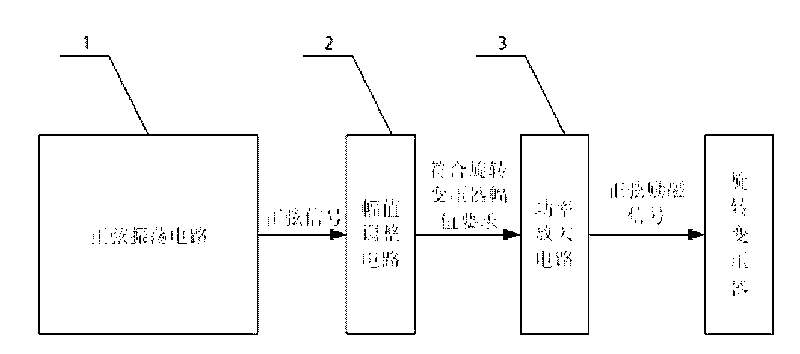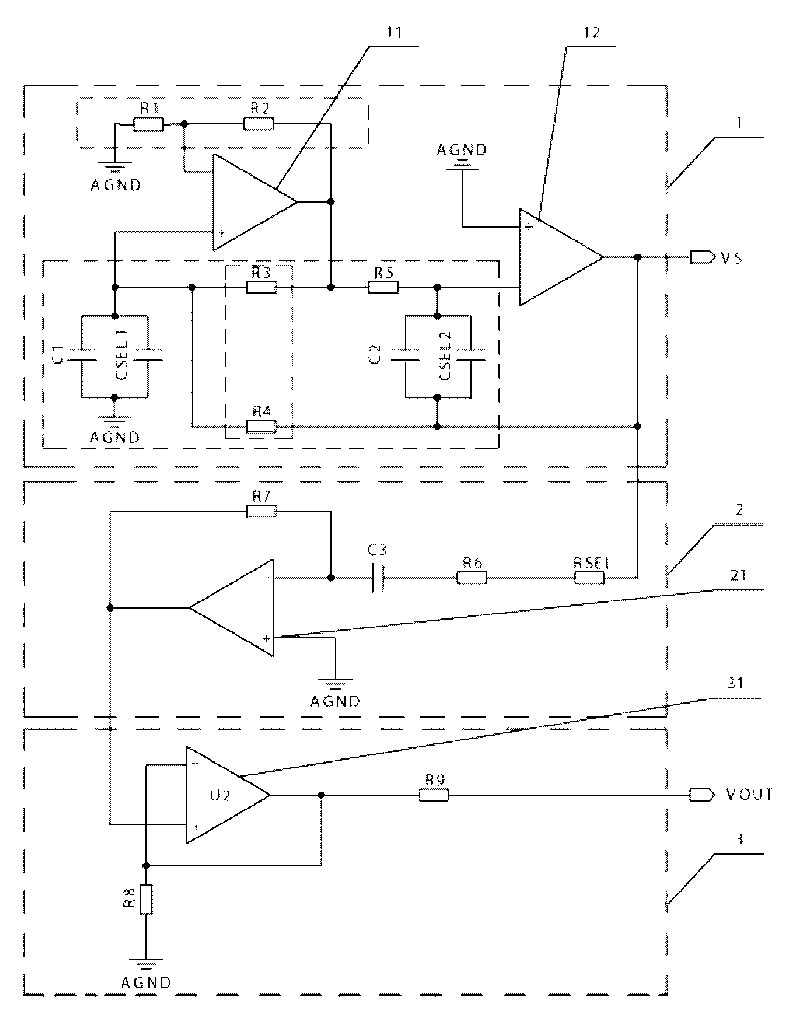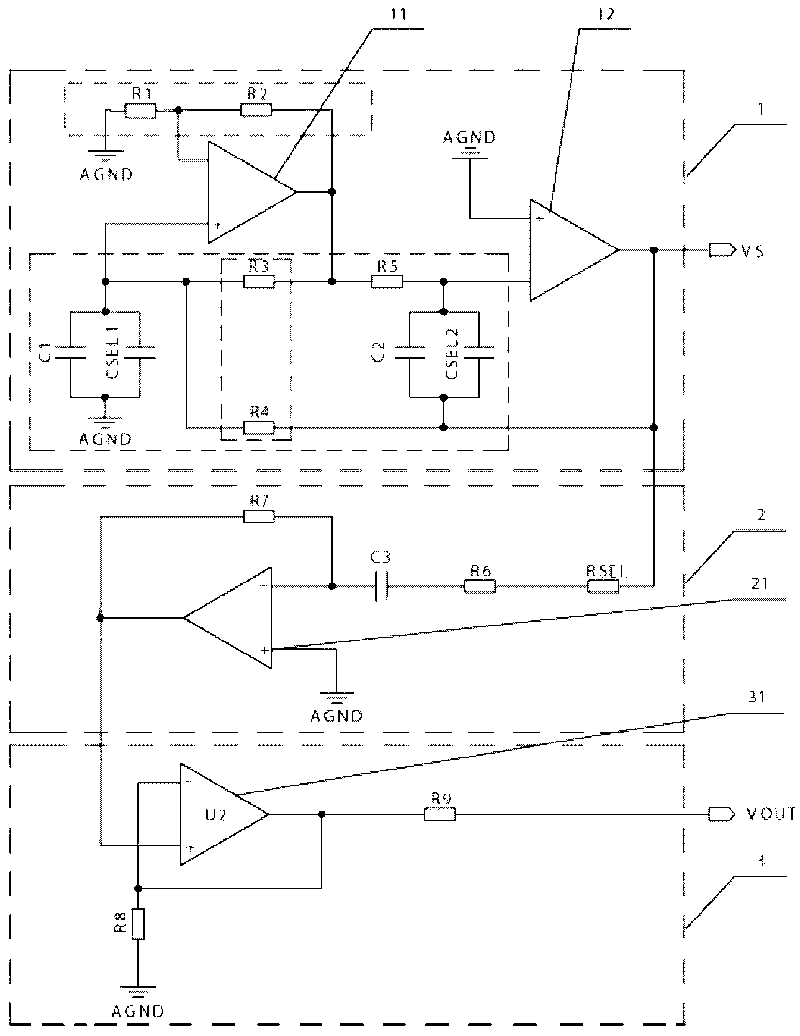Excitation power circuit of rotary transformer
A technology of rotary transformer and excitation power supply, which is applied in the direction of conversion equipment that can be converted to direct current without intermediate conversion. It can solve problems such as inability to work independently and complex circuits, and achieve insensitivity to temperature changes, low distortion of output waveforms, and circuit simple effect
- Summary
- Abstract
- Description
- Claims
- Application Information
AI Technical Summary
Problems solved by technology
Method used
Image
Examples
specific Embodiment approach 1
[0010] Specific implementation mode one: the following combination Figure 1-Figure 2 Describe this embodiment, this embodiment is made up of sinusoidal oscillation circuit 1, amplitude adjustment circuit 2 and power amplifying circuit 3, and sinusoidal oscillation circuit 1 is composed of resistance R1, resistance R2, resistance R3, resistance R4, resistance R5, capacitance C1, capacitance C2, capacitor CSEL1, capacitor CSEL2, the first operational amplifier 11 and the second operational amplifier 12, the amplitude adjustment circuit 2 is composed of resistor R6, resistor R7, resistor RSEL, capacitor C3 and the third operational amplifier 21, the power amplifier circuit 3 Composed of resistor R8, resistor R9 and power amplifier 31,
[0011] One end of the resistor R1 is connected to the analog ground, the other end of the resistor R1 is connected to the inverting input terminal of the first operational amplifier 11, and a resistor R2 is connected between the inverting input t...
specific Embodiment approach 2
[0028] Embodiment 2: The difference between this embodiment and Embodiment 1 is that the power amplifying circuit 3 also includes a resistor R9, one end of the resistor R9 is connected to the output end of the power amplifier 31, and the other end of the resistor R9 is the excitation power supply output of the circuit. Other components and connections are the same as those in Embodiment 1.
[0029] Resistor R9 is connected to the output terminal of power amplifier 31, and its resistance value can be selected within the range of tens of ohms. Crosstalk or signal reflection occurs.
specific Embodiment approach 3
[0030] Embodiment 3: The difference between this embodiment and Embodiment 1 or 2 is that the capacitors all use ceramic non-polar capacitors. Other compositions and connections are the same as those in the first or second embodiment.
[0031] Ceramic non-polar capacitors have a wide range of capacitance options and low prices, which is beneficial to frequency selection and reduces circuit costs.
PUM
 Login to View More
Login to View More Abstract
Description
Claims
Application Information
 Login to View More
Login to View More - R&D
- Intellectual Property
- Life Sciences
- Materials
- Tech Scout
- Unparalleled Data Quality
- Higher Quality Content
- 60% Fewer Hallucinations
Browse by: Latest US Patents, China's latest patents, Technical Efficacy Thesaurus, Application Domain, Technology Topic, Popular Technical Reports.
© 2025 PatSnap. All rights reserved.Legal|Privacy policy|Modern Slavery Act Transparency Statement|Sitemap|About US| Contact US: help@patsnap.com



